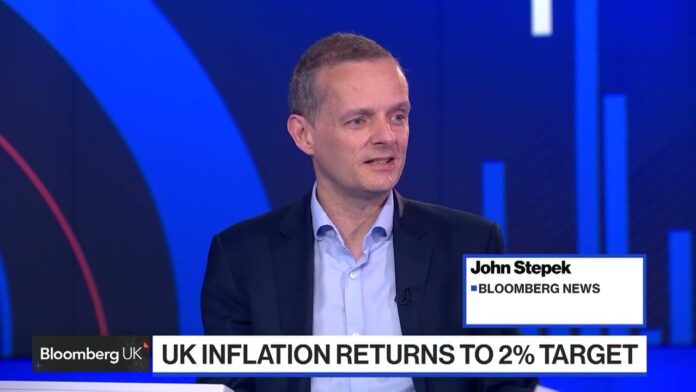Central banks play a crucial role in the economy by implementing monetary policies. These policies are used to control the money supply, interest rates, and inflation levels in a country. The central bank is responsible for maintaining price stability and promoting economic growth. With its powerful tools and instruments, the central bank has the ability to influence the economy in a significant way.
One of the most important aspects of central bank policies is interest rates. Interest rates have a direct impact on borrowing and spending behaviors of individuals and businesses. Therefore, it is essential to understand the objectives, tools, and impact of central bank policies on the economy. In this article, we will delve deeper into the world of central banking and explore its various aspects.
Objectives of Central Bank Policies
The primary objective of central bank policies is to achieve macroeconomic stability. This includes controlling inflation, promoting economic growth, and maintaining exchange rate stability. Let’s take a closer look at each of these objectives.
Controlling Inflation
Inflation refers to the general increase in prices of goods and services in an economy over a period of time. High inflation can be detrimental to the economy as it erodes the purchasing power of individuals and reduces their standard of living. Therefore, central banks aim to keep inflation levels within a target range.
To control inflation, central banks use a variety of tools such as setting interest rates, open market operations, and reserve requirements for banks. By increasing interest rates, the central bank makes it more expensive for individuals and businesses to borrow money. This, in turn, reduces spending and helps to curb inflation. Open market operations involve buying or selling government securities in the open market, which affects the money supply in the economy. Lastly, reserve requirements refer to the percentage of deposits that banks are required to hold with the central bank. By changing these requirements, the central bank can influence the amount of money available for lending in the economy.
Promoting Economic Growth
Central bank policies also aim to promote economic growth. This is achieved by maintaining low and stable interest rates, which encourages borrowing and spending. When individuals and businesses have access to affordable credit, they are more likely to invest in new projects, expand their businesses, and drive economic growth.
Additionally, central banks may also intervene in the foreign exchange market to maintain a stable exchange rate. This is important for promoting international trade and attracting investments into the country. In times of economic downturns, central banks may also implement expansionary monetary policies such as quantitative easing, which involves buying government securities to inject money into the economy and stimulate growth.
Tools and Instruments used in Central Bank Policies

In order to achieve its objectives, central banks use a variety of tools and instruments. These tools can broadly be categorized into two types – conventional and unconventional.
Conventional Tools
The most commonly used conventional tool by central banks is the setting of interest rates. This includes the policy rate, which is the interest rate at which the central bank lends to commercial banks, and the benchmark rate, which is the interest rate that banks use as a reference for setting their own lending and deposit rates.
Another conventional tool is open market operations, which involve buying or selling government securities in the open market. Central banks use this tool to either increase or decrease the money supply in the economy, depending on their macroeconomic objectives.
Lastly, reserve requirements are also a conventional tool used by central banks. By changing the amount of reserves that banks are required to hold with the central bank, they can control the amount of money available for lending in the economy.
Unconventional Tools
Unconventional monetary policy tools are used by central banks in extreme situations where conventional tools are no longer effective. These tools are usually used during times of economic crisis, such as recessions or financial crises.
One of the most commonly used unconventional tools is quantitative easing (QE). This involves the central bank buying large quantities of government securities to increase the money supply and stimulate economic growth. QE is typically used when interest rates are already low and cannot be lowered further.
Forward guidance is another tool used by central banks, where they communicate their future monetary policy plans to the public. This helps to manage market expectations and can influence borrowing and spending behaviors.
Impact of Central Bank Policies on the Economy

Central bank policies have a significant impact on the economy. By controlling interest rates and the money supply, they can influence various aspects of the economy such as inflation levels, economic growth, and exchange rates.
Inflation
As mentioned earlier, one of the primary objectives of central bank policies is to control inflation. By using conventional tools such as setting interest rates and open market operations, central banks can influence the demand for goods and services in the economy. If inflation is too high, they can raise interest rates to reduce spending and curb inflation. Conversely, if inflation is too low, they can lower interest rates to stimulate spending and increase inflation.
Economic Growth
Central bank policies also have an impact on economic growth. By maintaining low and stable interest rates, businesses are more likely to invest and expand, leading to economic growth. Additionally, through unconventional tools such as QE, central banks can inject money into the economy during times of crisis, which can help to spur economic activity.
Exchange Rates
Exchange rates refer to the value of one currency in relation to another. Central bank policies can have an impact on exchange rates by influencing the demand for a country’s currency. For example, if a country’s central bank raises interest rates, it makes its currency more attractive to foreign investors, leading to an increase in demand and a strengthening of the currency.
Challenges and criticisms of Central Bank Policies
Despite their important role in the economy, central bank policies have faced criticism and challenges over the years. Some of the main criticisms include:
Political Pressure
Central banks are often subject to political pressure from governments and other interest groups. This can lead to a conflict of interest, as the central bank may be forced to implement policies that are not in line with their objectives, but rather cater to the interests of those in power. This can undermine the effectiveness of central bank policies and lead to poor economic outcomes.
Inflation Targeting
The use of inflation targeting as a monetary policy framework has also been criticized. This approach focuses solely on controlling inflation levels and can neglect other important aspects of the economy such as economic growth and employment. Critics argue that by solely focusing on inflation, central banks may be ignoring other issues that can have a significant impact on the economy.
Effectiveness of Tools
Another challenge is the effectiveness of central bank tools in achieving their objectives. With unconventional tools, such as QE, there is no guarantee that it will have the desired impact on the economy. Additionally, the use of these tools can have unintended consequences, such as asset bubbles and increased income inequality.
Case studies of successful Central Bank Policies
Despite the challenges and criticisms, there have been several successful examples of central bank policies in action. Two notable case studies include the United States Federal Reserve and the European Central Bank (ECB).
United States Federal Reserve
During the global financial crisis of 2008, the US Federal Reserve took decisive action to stabilize the economy. They implemented a series of unconventional measures, including lowering interest rates to near zero and conducting large-scale asset purchases through QE. These actions helped to stimulate economic growth and prevent a full-blown recession.
European Central Bank
The ECB has also played a crucial role in stabilizing the Eurozone during times of crisis. During the Eurozone debt crisis in 2012, the ECB implemented its Outright Monetary Transactions (OMT) program, which involved buying government bonds of struggling countries. This helped to bring down borrowing costs for these countries and prevent a further spread of the crisis.
Conclusion and future outlook
Central bank policies are an essential aspect of the economy, with the power to influence various aspects such as inflation, economic growth, and exchange rates. While there have been challenges and criticisms, there is no doubt that central banks play a crucial role in promoting macroeconomic stability.
Looking towards the future, central banks will continue to face new challenges and will need to adapt to a rapidly changing world. With the rise of digital currencies and the increasing interconnectedness of global economies, central banks will need to find innovative ways to achieve their objectives and maintain financial stability. However, one thing is clear – central banks will continue to play a vital role in shaping the economy and promoting economic prosperity.









